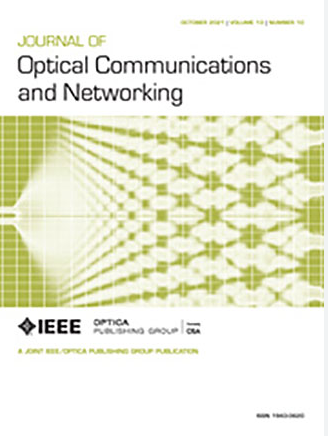End-to-end transport network digital twins with cloud-native SDN controllers and generative AI [Invited]
IF 4.3
2区 计算机科学
Q1 COMPUTER SCIENCE, HARDWARE & ARCHITECTURE
引用次数: 0
Abstract
This paper explores the potential of network digital twins (NDTs) in networking (both IP Ethernet networks and optical transport networks), highlighting their integration with cloud-native software-defined networking (SDN) controllers and intent-based networking enabled by generative artificial intelligence (GenAI). The proposed framework represents an approach that combines advanced virtualization, real-time analytics, and GenAI. The use of NDTs enables a comprehensive and dynamic digital representation of the physical network, capturing critical aspects, such as topology, traffic patterns, and performance metrics, which permits data-driven decision-making to lead to more efficient networking operations. The incorporation of cloud-native SDN controllers along with an NDT ensures that the system remains scalable, flexible, and responsive to dynamic network conditions. Intent-based networking, powered by GenAI, allows the network to interpret high-level objectives from operators and autonomously translate them into actionable configurations that are enforced by orchestrators and SDN controllers. This eliminates manual intervention, minimizes errors, accelerates the deployment of network services, and provides a means for easier network management. The presented framework significantly enhances automation, enabling predictive maintenance by identifying potential issues before they impact network performance. It optimizes network design by simulating various configurations and testing their feasibility in a risk-free environment. These capabilities collectively improve operational efficiency, reduce downtime, and ensure optimal resource utilization.端到端传输网络数字孪生与云原生SDN控制器和生成式人工智能[特邀]
本文探讨了网络数字孪生(ndt)在网络(IP以太网和光传输网络)中的潜力,强调了它们与云原生软件定义网络(SDN)控制器和由生成式人工智能(GenAI)支持的基于意图的网络的集成。提出的框架代表了一种结合了高级虚拟化、实时分析和GenAI的方法。使用ndt可以实现物理网络的全面和动态数字表示,捕获关键方面,如拓扑、流量模式和性能指标,从而允许数据驱动的决策,从而实现更有效的网络操作。云原生SDN控制器与NDT的结合确保了系统保持可扩展性、灵活性和对动态网络条件的响应。基于意图的网络,由GenAI提供支持,允许网络解释来自运营商的高级目标,并自主地将其转换为可操作的配置,由编排器和SDN控制器强制执行。这消除了人工干预,最大限度地减少了错误,加速了网络服务的部署,并提供了一种更容易管理网络的方法。所提出的框架显著增强了自动化,在潜在问题影响网络性能之前识别它们,从而实现预测性维护。它通过模拟各种配置并在无风险环境中测试其可行性来优化网络设计。这些功能共同提高了操作效率,减少了停机时间,并确保了最佳的资源利用。
本文章由计算机程序翻译,如有差异,请以英文原文为准。
求助全文
约1分钟内获得全文
求助全文
来源期刊
CiteScore
9.40
自引率
16.00%
发文量
104
审稿时长
4 months
期刊介绍:
The scope of the Journal includes advances in the state-of-the-art of optical networking science, technology, and engineering. Both theoretical contributions (including new techniques, concepts, analyses, and economic studies) and practical contributions (including optical networking experiments, prototypes, and new applications) are encouraged. Subareas of interest include the architecture and design of optical networks, optical network survivability and security, software-defined optical networking, elastic optical networks, data and control plane advances, network management related innovation, and optical access networks. Enabling technologies and their applications are suitable topics only if the results are shown to directly impact optical networking beyond simple point-to-point networks.

 求助内容:
求助内容: 应助结果提醒方式:
应助结果提醒方式:


